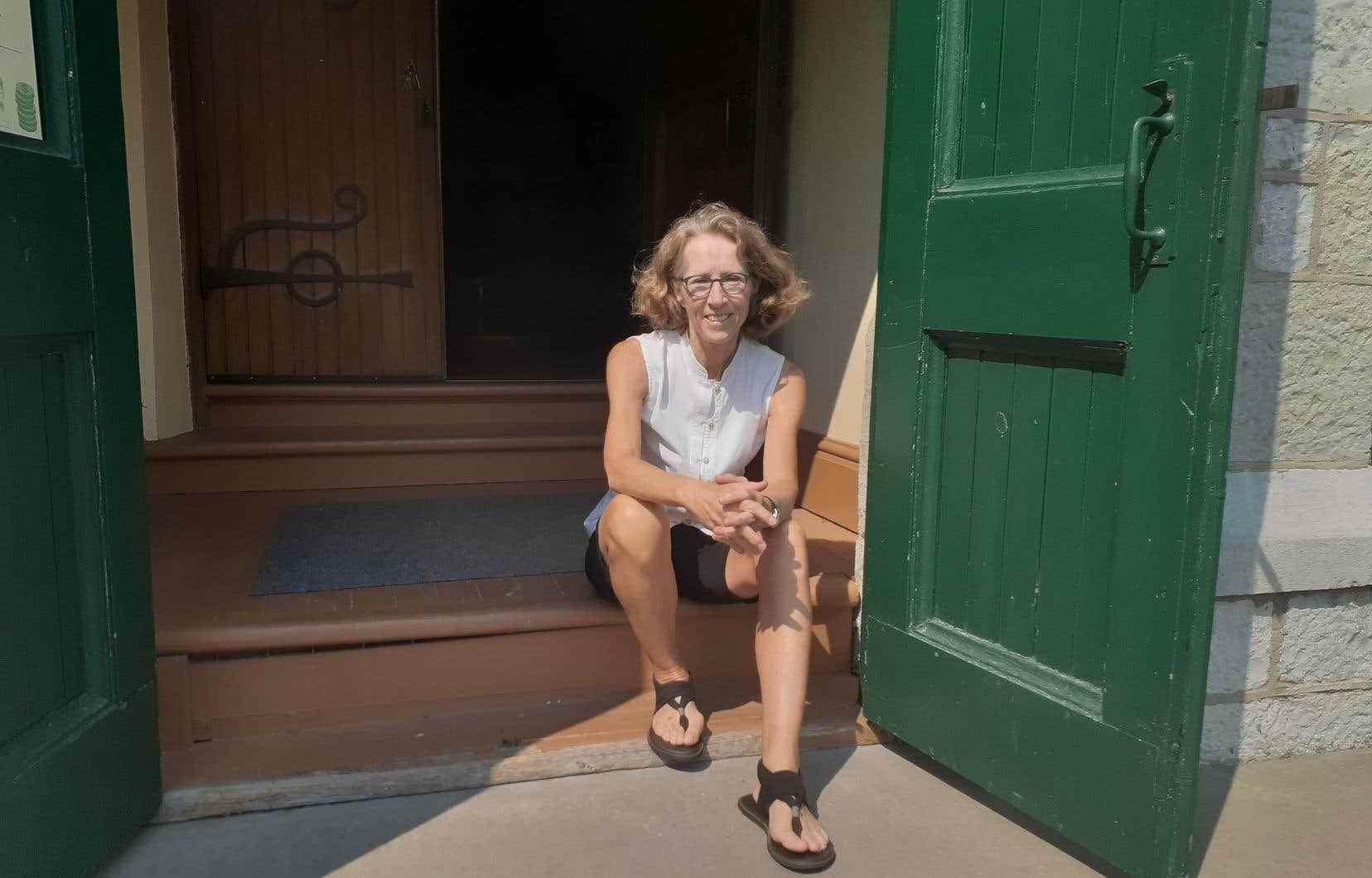Feelings about the death of Queen Elizabeth II are divided in the Loyalist region of Ontario, between Kingston and Belleville. While some mourn his death, others are less dismayed. Either way, British history is here to stay in this corner of the province, where colonizers loyal to the British regime took refuge after and during the American Revolutionary War.
Two wreath-adorned gates greet drivers at kilometer zero of the Loyalist Parkway along Lake Ontario, a route through the area dotted with historical markers. Matt Dillon leans his bike on one of them; in 1984, the Queen herself blessed the entrance during a visit to Canada. The cyclist pulls out his phone, then takes a picture. The day after the death of the queen, the Ontarian wants to pay tribute to her. “I met her when I was five years old in the Northwest Territories,” says Matt Dillon.
Jim Hegadorn, the mayor of Loyalist Township, a municipality that encompasses different communities including Amherstview, where the gates are located, said there is a general feeling of “mourning and grief” in the township over the death. Along the walk, personal stories about the Queen and the monarchy abound, but do not form a monolith. Some, like Matt Dillon, seek to honor the Queen, while others — even if they are loyalist descendants — don’t.
A road strewn with history
Montrealer John McCormack is waiting for us at Amherstview, at the “Eastern Gates”; the gateway to the promenade was visited by the Queen during the 200e anniversary of the arrival of the loyalists. John McCormack left Quebec in 1978 and recently became a representative of the Association de la promenade Loyalist, a group responsible for beautifying the road. The alderman of Greater Napanee — the neighboring municipality of Loyalist Township — says the monarchy represents “the heritage of local people.”
A 30-minute drive west of Amherstview along the Loyalist Parkway, Jane Lovell enters St. Alban’s Church in Adolphustown, where the first Loyalists in Ontario landed in 1784. Philip Roblin, an ancestor of his, was one of them. The church was built in 1884, 100 years later.
I was taught that the Queen was the most important person on the planet.
Jane Lovell is keeping the church safe these days and would like to buy it with a group. She was in shock when she learned of the Queen’s death, but she admits that she was not so invested in the British monarchy, despite her genealogy. “It is what it is — I’ve come to terms with the fact that we have a queen,” she said. “Loyalists and monarchists should not be confused: many are loyalists by birth, but have no particular feelings [envers la monarchie] “, she says.
A childhood dream
Robert Stewart, also a descendant of the early Loyalists, is at home chatting on the steps of St. Mary Magdalene Anglican Church in Picton, a village at kilometer 48 of the Loyalist Parkway. His father was once the priest there, and the family home was behind the building.
The Ontarian in his early 50s moved for several years, notably to study at Bishop’s University, then returned near Picton six months ago. His hometown has changed, but not his admiration for the royal family.
“I was taught that the Queen was the most important person on the planet,” he says. His first meeting with the Queen was therefore all the more special. With a lump in his throat, the man explains that he was part of a reconstituted loyalist regiment in 1984, during a visit by the Queen to Ontario. “I would like to inspect the regiment,” the queen reportedly said. After walking for a few moments, she stopped in front of a dazzled Robert Stewart.
It was one of his family’s proudest moments. Thursday, when he received the call from a friend telling him of the death of the one he admired, Robert Stewart burst into tears. “We prayed for the queen when we were children,” he says.
“God Saves the King”
Like many Canadians, Robert Stewart wonders what will happen to the attachment to the royal family, now that the queen has died. “She’s the one we’ve always known,” he notes. But King Charles III will nevertheless have his unwavering support. ” God save the King “, he sings. Eliminating the monarchy in Canada, he thinks, is “politically impossible,” but sympathy for the royal family is diminishing, he observes. “It will be interesting to see what comes next,” says Robert Stewart.
An even greater separation between the Canadian government and the British monarchy could be difficult for residents of the region, thinks John McCormack, whose electoral district includes Adolphustown. If the monarchy has kept its honor, it is because of the leadership of the queen, says mayor Jim Hegadorn. “What happens next will depend on the next leader,” he said. But no matter what happens, in the Loyalist township, “history remains intact,” he says.
This story is supported by the Local Journalism Initiative, funded by the Government of Canada.
